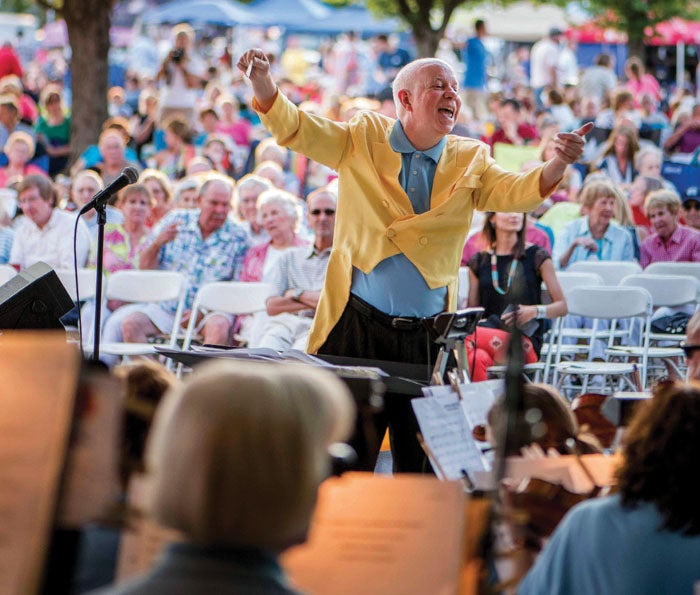POPS: ‘Past, Present, Park’: This year’s concert explores it all
Published 12:00 am Sunday, May 27, 2018

- Maestro David Hagy leads the Salisbury Symphony during last year’s Pops at the Post. Jon C. Lakey/Salisbury Post
When planning this year’s Pops at the Post program, Maestro David Hagy said he was inspired by “some historic kind of thinking.”
“I like thinking of what was going on 100 years ago, what was going on 50 years ago,” he said. “I’m very much into that because I think it puts us in the place of where we were and where we are now.”
But this year, he decided to go further than past and present, and he’s using his song selection to celebrate both history and the future.
By the future, he means the near-future of Pops at the Post’s very location: the soon-to-be home of Bell Tower Green, a much-needed greenspace in downtown Salisbury.
“We know that the park is going to break ground … after Pops, so I just took the word ‘park’ and went with that,” said Hagy. “We are going to present four pieces together that have to do with the park.”
He said most of the pieces pertain to the dreams for an ideal park: “Saturday in the Park” by Chicago and “MacArthur Park,” for example.
“That’s just a description of exactly what we want this park to be,” he said.
Hagy said the symphony also has visions of performing mini-concerts in Bell Tower Green, which could feature “The Thunderer March,” another song from the 2018 set list.
From there, dreams turn to nightmares with the theme from “Jurassic Park.”
“What’s a little humor, after all?” said Hagy.
Other songs will celebrate the nation’s history in those intervals Hagy specified: 100 years ago, 50 years ago, and now. The symphony will play the postwar song “Over There” by George M. Cohan, “Hey Jude” by the Beatles, and a medley of songs from the musical “Hamilton.”
There will be more nods to times gone by: “Hello, Dolly!” featuring four singers in honor of Pearl Bailey. Antonín Dvořák’s “Symphony No. 8” will be in memory of local philanthropist Bill Stanback and the symphony’s late principal cellist, Anne Selletti, who died in 2016.
“You could tell (Dvořák) wrote with the outdoors in mind. … There’s one theme that’s written because he heard a bird,” said Hagy. “He said it was a bird call and it’s played by a solo flute to begin with. That’s so appropriate for Bill Stanback with all his support of the nature and the LandTrust and ecological preserves and everything like that.”
“Symphony No. 8″ was featured in the Salisbury Symphony’s 2017-18 season, during a March concert held in celebration of Bill Stanback and Selletti.
The concert featured 10 new cello chairs that had been donated in Selletti’s memory. The seats keep the instrumentalists in proper positions for playing and will be used during this year’s Pops at the Post.
And there will be more additions to this year’s concert thanks to local contributors, according to the maestro. Fred Stanback sponsored additional snare drummers, an action Hagy said was inspired by the man’s love of marches.
The sponsorship and additional drummers led to an additional two marches in this year’s program, Hagy said. One of these will further celebrate the park’s immediate future.
Hagy said he commissioned director of music at First Presbyterian Church John Stafford to compose a new march dedicated to the upcoming greenspace. It’s called the “Bell Tower March.”
The title is fitting both for the park and for Stafford’s direction of the Bell Tower Ringers, a handbell choir.
Hagy said the piece will feature the actual Bell Tower bells as the piece begins.
“We expect that this piece will have a life more than just this year,” he said. “It may become one of those things that we do, if not annually, at least on a periodic basis to remind ourselves about the Bell Tower, especially since the park is going to be named after it.”
To that affect, the maestro said the piece serves as more than just an homage to the concert’s surroundings. He views it as a celebration of things to come, he said.
“The title of the concert cements our relationship with the Post,” said Hagy. “Now, we want to cement our relationship with the park by doing this march so that we are in our place here for the very long-term future.”




